Seasons – May 2022
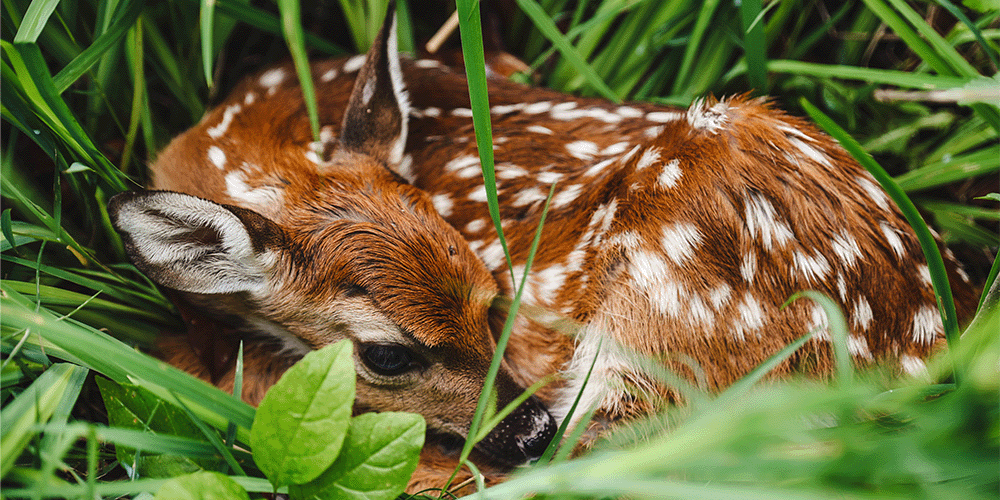
From the Plateau Land & Wildlife Management Team
Named after the Greek goddess Maia, the month of May brings warmer temps, blooming flowers, and the fresh beginnings of summer. Before the final touchstones of Spring fade away, there’s no better way to enjoy this month than getting outside.
In this issue of Seasons, you’ll find guides by Plateau’s team of biologists and Wildlife Management staff to help you make the most out of the remaining spring season. We’ll cover tips to ensure you’re on track with Spring Management Activities, the benefits of Riparian Zones, Tips For Navigating Property Tax Protests, news for Texas landowners, and more.
We hope you enjoy the read and everything this edition has to offer, and if there’s any way Plateau can help you protect, enhance or better enjoy your land during this beautiful season, just give us a call. We’ll be here when you need us.
Until next Seasons,
The Plateau Team
Table of Contents
A River Runs Through It: The Importance of Riparian Zones
Wildlife Management Activity Reminder: Spring Checklist
Know Your Plants: Native Plant Identification for Common Grasses, Forbs and Wildflowers
“I Found a Fawn” – Tips for Interactions with Newborn Wildlife
Braun & Gresham: Tips for Protesting Your Property Taxes
News for Texas Landowners
A River Runs Through It: The Importance of Riparian Zones
By Shane Kiefer, Director Of Ecological Services, Certified Wildlife Biologist, Senior Property Tax Consultant
Rip arian zones occur around lakes, reservoirs, and wetlands, but they are more commonly associated with rivers and streams. There are 15 major rivers that flow through Texas and nearly 200,000 miles of streams and rivers in the state. Not everyone has riverfront property, but many people have some sort of watercourse flowing through their land. The supply of water and nutrients in these areas supports vegetation that does not occur in the surrounding uplands. The diverse structure and composition of these areas provide long, connected corridors of habitat for wildlife. These areas are known as riparian zones or riparian systems.
arian zones occur around lakes, reservoirs, and wetlands, but they are more commonly associated with rivers and streams. There are 15 major rivers that flow through Texas and nearly 200,000 miles of streams and rivers in the state. Not everyone has riverfront property, but many people have some sort of watercourse flowing through their land. The supply of water and nutrients in these areas supports vegetation that does not occur in the surrounding uplands. The diverse structure and composition of these areas provide long, connected corridors of habitat for wildlife. These areas are known as riparian zones or riparian systems.
Wetlands are characterized by soils that are typically saturated by water and poorly drained, but riparian zones only experience periodic flooding in well-drained soils with a water table that is much closer to the surface than in upland habitats. Riparian vegetation relies on occasional access to free water in the water table to survive. Bald cypress, sycamore, pecan, and black willow are just a few of the many plants that require at least temporary access to the water table or elevated soil moisture to thrive.
People, livestock, and wildlife all rely on riparian zones. People utilize them heavily for recreation, as a quick drive to any river during the summer (except perhaps Summer 2020) will tell you. Livestock and people use them for similar reasons – water, food, and cooler temperatures. Many species of wildlife rely on riparian zones to survive. They produce enormous quantities of food and often provide access to the only water available for miles. As with most water-associated areas, the extremes of the surrounding uplands are moderated in riparian zones. While they offer cool shade in the summer, the dense vegetation also offers thermal insulation in the winter.
In addition to providing wildlife habitat, properly vegetated riparian zones also absorb water and energy from floods, reducing downstream flooding and erosion and the damage it causes while increasing infiltration for groundwater recharge. Shading helps keep water temperatures cool, providing higher levels of dissolved oxygen for aquatic organisms. Tree roots and grasses growing along stream banks trap sediment from upstream erosion, helping to clean the water before it moves on. The underground biomass in these systems can exceed what you see growing aboveground, and all that underground material acts like a sponge to absorb, hold, and slowly release water. Since it all flows downhill, proper management of your riparian zones benefits not only you but everyone downstream as well.
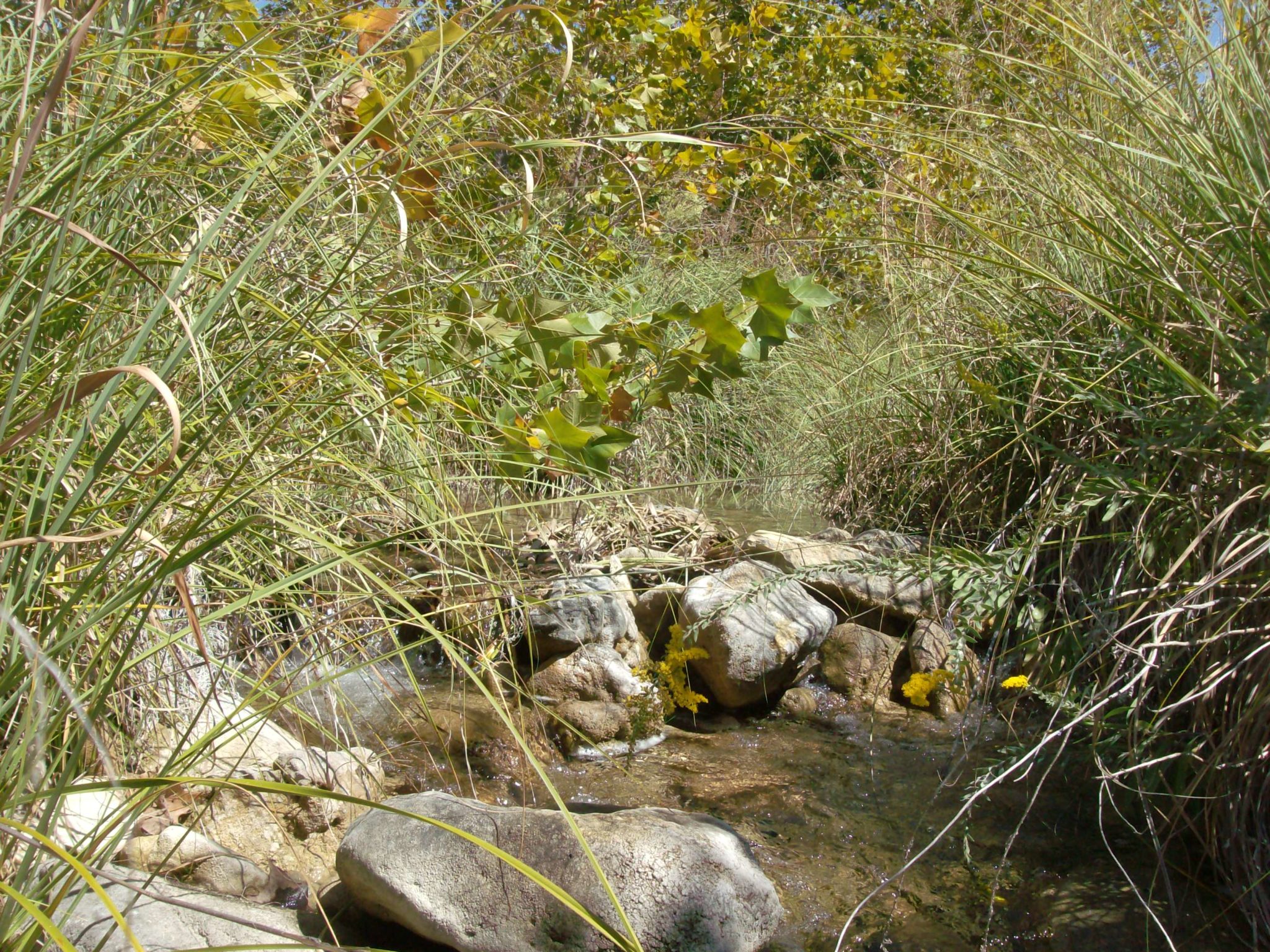 Perhaps the most important aspect of riparian zones for many small landowners is their role as travel corridors for wildlife of all kinds. Small acreage landowners can provide a variety of benefits for wildlife on their property, but these patches of quality habitat are often isolated from each other by different land uses. Heavily wooded streams provide protection for deer, turkey, bobcats, songbirds, and other mobile animals as they move from patch to patch, like a highway system for wildlife. Even if the surrounding habitat is in poor condition, wildlife can use riparian corridors to find quality habitat on nearby properties. Those of you lucky enough to have riparian habitat likely have many more species of wildlife at any given time than those with only upland habitat.
Perhaps the most important aspect of riparian zones for many small landowners is their role as travel corridors for wildlife of all kinds. Small acreage landowners can provide a variety of benefits for wildlife on their property, but these patches of quality habitat are often isolated from each other by different land uses. Heavily wooded streams provide protection for deer, turkey, bobcats, songbirds, and other mobile animals as they move from patch to patch, like a highway system for wildlife. Even if the surrounding habitat is in poor condition, wildlife can use riparian corridors to find quality habitat on nearby properties. Those of you lucky enough to have riparian habitat likely have many more species of wildlife at any given time than those with only upland habitat.
Due to the fact that riparian zones often occupy very small areas in relation to their benefits, they are more susceptible to degradation and poor management. Livestock can be particularly hard on stream banks and riparian vegetation, just as people are along urban rivers. Vehicles can damage riparian areas as well, but this can be mitigated by installing alternate routes or low water crossings. The need to provide access to water and protect your streams and rivers can be balanced by restricting livestock and recreational access to targeted areas, leaving most of the bank in a more natural state. While a long, clean bank of shortly mowed grass with a few trees makes it easy to see and access your stream, it is an entirely unnatural condition that creates a poorly functioning riparian area.
Riparian systems are self-managing in many ways if we can avoid putting up obstacles to natural processes. Sometimes well-meaning efforts such as excessive vegetation removal, dams, removal of large wood, and typical engineered “solutions” often create larger issues by interfering with natural processes. Knowing how to identify functional riparian systems and things that hinder function are the best tools in your management toolbox for these special areas. Sometimes the best management is to stop “managing” so you can get the most out of these habitats that are small in size but big in benefits.
For a wealth of information on riparian areas and their management please visit www.remarkableriparian.org.
Have questions about Riparian Zones? Please contact us at [email protected] or (512) 894-3479.
Activity Reminder: Spring Wildlife Management Checklist
By Kameron Bain, Landowner Account Manager
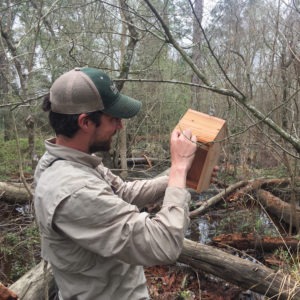 Don’t let summer sneak up on you before you complete your Spring wildlife management activities.
Don’t let summer sneak up on you before you complete your Spring wildlife management activities.
From bluebonnets blooming to birds zipping around, the signs of spring are all around us, but they won’t last long. This is an important season for wildlife management plan landowners with several key activities to accomplish before the the end of the season. With spring halfway over, we want to make sure you are on track to finish your spring qualifying wildlife management activities and that they are well documented. Here’s a quick checklist to review to ensure you’ve completed the activities that align with your management goals:
- Predator Control
- Imported Red Fire Ant Control
- Brown-headed cowbirds during breeding bird season
- Erosion Control
- Supplemental Water
- Spring Breeding Bird Surveys
- Re-Seeding Native Grasses
There are plenty of timely activities to choose from, and of course, Plateau is always here to help when you need us.
To schedule a service for your property, contact us at [email protected] or (512) 894-3479.
Know Your Plants: Native plant identification for common grasses, forbs & wildflowers
By Shane Kiefer, Director Of Ecological Services, Certified Wildlife Biologist, Senior Property Tax Consultant
Join Director of Ecological Services, Shane Kiefer, for this one hour webinar on identification of common native Texas flora.
Plants structure ecosystems and provide habitat and food for wildlife. As such, identifying and classifying plants are essential skills for wildlife management. This course gives students a foundation in the practical skills needed to identify and classify plants in Texas. Viewers will learn how to define characteristics of plants, classify plants into major plant groups and common plant families, and geographical information to identify plant species from their local areas.
Interested in partnering with a Plateau Biologist to identify plant species on your property ? Consider a Plateau Biologist Site Visit. At Plateau, our biologists are especially suited to address your overall vision for your land and provide recommendations for optimal land stewardship. Spend a couple of hours with a Plateau Biologist on your land, and find out what you might be missing.
Learn more at https://plateauwildlife.com/biologist/.
Back to TopBack to TopI found a baby deer alone on my property – do they need help?
James A. Hall, Staff Biologist of Plateau Land and Wildlife Management
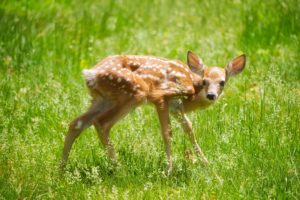 Spring is underway in Texas, heralded by warmer temperatures, birdsong, and blooming plant life. For White-tailed Deer (Odocoileus virginianus), this is the beginning of the fawning season.
Spring is underway in Texas, heralded by warmer temperatures, birdsong, and blooming plant life. For White-tailed Deer (Odocoileus virginianus), this is the beginning of the fawning season.
It is common to find a fawn bedded in tall vegetation, lying still, and seemingly abandoned with mother doe nowhere in sight. While the young animal appears to be alone and requiring our assistance, our intervention can actually become detrimental to its survival.
Fawns are not yet strong enough to follow their mother around all day. Periods of motionless isolation is a perfectly natural form of avoiding detection from predators, while the doe forages or rests elsewhere. More than likely, as we attempt to care for the “orphaned” fawn, the doe is nearby and attentive to its offspring. Therefore, handling a bedded fawn is often unnecessary, and will cause undue stress to the animal.
If the fawn appears emaciated or injured, then it is acceptable to provide aid by contacting a wildlife rehabilitator. Otherwise, do not handle or disturb the animal, other than snapping a picture and taking a brief moment to admire nature at its work.
Back to TopBack to TopTips for Navigating Property Tax Protests
Cassie Gresham, Braun & Gresham Attorney and Counselor
Cassie Gresham, Braun & Gresham attorney and counselor, reviews best practices for protesting your property tax valuation.
Braun & Gresham Attorney and Counselor, Cassie Gresham, provides tips for navigating property tax protests. Cassie covers your deadlines to protest, considerations for working through the Appraisal Review Board process, common mistakes and pitfalls, and more. This webinar will benefit any landowner and provide insight on how to properly protest your property tax valuation.
For more information about Gresham and Braun & Gresham law firm, visit: https://braungresham.com/meet-the-team/cassie-gresham/ .
News for Texas Landowners
What the Bleep Is Going On With Texas Property Taxes?
Article by Forrest Wilder for Texas Monthly

If you’ve recently received your property appraisal and your response is, “Holy @$%—this is nuts!” you’re not alone in your expletive-filled reaction. Many Texans have received eye-popping estimates of their homes’ appraised values. Residential appraisals are up 15 to 30 percent in Harris County, 20 percent in Tarrant County, 24 percent in Dallas County, 25 percent in Bexar County, and 53 percent in Travis County, and I could go on.
My partner and I bought our 1,100-square-foot home in East Austin in 2011 for $200,000—what seemed like a fortune at the time. The market value has soared since then. Last year, the Travis CAD pegged our home’s market value at $428,032. According to the Notice of Appraised Value we received in April, that figure has soared to $656,039—a staggering 53 percent increase…
Enrollment open for Managed Lands Deer Program
Article by Texas Farm Bureau
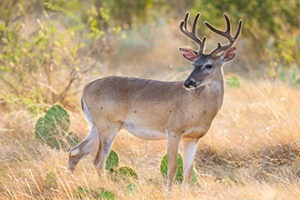
Signup is now underway for a program that gives enrolled landowners additional opportunities to hunt deer while also encouraging conservation of natural resources and wildlife habitat.
“The Managed Lands Deer Program (MLDP) is a program the Texas Parks and Wildlife Department (TPWD) developed a long time go,” Alan Cain, TPWD white-tailed deer program leader, told the Texas Farm Bureau Radio Network. “It’s intended really to get landowners to foster and support good wildlife management, good stewardship of our wildlife resources and habitats on private lands.”
The program is habitat driven, but a big part of it is deer harvest.
Removing the mystery of groundwater to protect Texas’ beloved Hill Country
Article
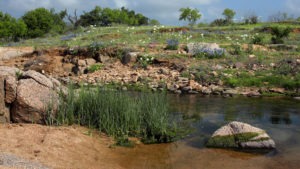
What makes the Texas Hill Country unique? In my mind, it comes down to one thing: groundwater. It is impossible to overstate the importance of groundwater to this region, because without it, the Hill Country would not be the region we know and love.
It is the beauty and abundance of the Hill Country’s water resources that have attracted people here for thousands of years.
As the recently published State of the Hill Country Report reveals, the region is on the verge of becoming a victim of its own success as people are moving to the Hill Country in droves for its beauty and high quality of life. The report introduces eight key metrics to help track the region’s health and guide decisions that will determine whether the region will continue to thrive or live beyond its means.
The Great Springs Project Aims to Build a 100-Mile Hike-and-Bike Trail From Austin to San Antonio
Article by Megan Kimble for Texas Monthly
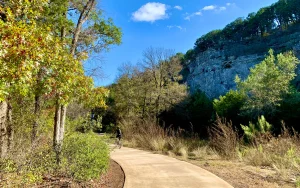
Much of the hundred-mile contiguous trail envisioned by the Great Springs Project will involve the linking of trails that already exist or are already being planned. It’s a lot of logistical work: making sure local governments along the corridor are talking to one another about their trail plans, and asking them to nudge alignments east or west so that they might connect. Where no trail exists yet, the project will try to get right-of-way access from private property owners. On April 11, Great Springs Project released its master trail alignment, showing for the first time the specific path it plans to cut between Austin and San Antonio. As the nonprofit continues to refine this plan, part of Skrobanek’s job is to survey the landscape, climbing through culverts and scrambling up slopes, trying to piece together the jigsaw puzzle of existing segments that will connect to form a greater whole. “It’s working with what we have and then figuring out how to incorporate a trail,” he says. “We need to work with those landowners and make sure that we have everybody on board.”
Lone Star Land Steward Awards Slated for May 25
Article by TPWD

The Texas Parks and Wildlife Department (TPWD) is proud to reveal the 2022 Lone Star Land Steward Ecoregion Award winners. This year’s award winners represent a variety of conservation goals and accomplishments, all of which display excellence in natural resource management and stewardship.
Lone Star Land Steward Awards recognize private landowners in Texas for their exemplary contributions to land, water and wildlife stewardship. With 95 percent of the land in Texas under private ownership, the conservation and stewardship efforts of private landowners are of vital importance to all Texans.
A pristine creek stands to be impacted by San Antonio’s expanding suburbs, nearby landowners respond
Article by Texas Public Radio
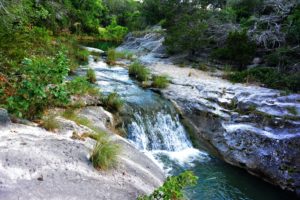
Just over the county line in Comal County is a creek that’s small but full of wild character. Here, cypress trees, dotted with the green new growth of spring, tower overhead where curtains of Spanish moss, still dormant gray, flutter in the wind. Fish dart through pools fed by the gurgling Honey Creek. Just over that same county line, the suburbs of San Antonio continue to expand northward. In fact, the potential impact of this encroaching development on Honey Creek has been a concern for years.
“When the property was acquired back in the ‘80s…by the Nature Conservancy, I don’t think anybody could have foreseen or certainly wasn’t thinking about the level of growth that we’re seeing now in the area,” said Jeff Francell of the Nature Conservancy. “And that’s just based on its proximity to San Antonio and Boerne and New Braunfels. You know, some of the fastest growing areas in the country.”
McConaughey Narrates Texas Wildlife Film
Article by County Line Magazine
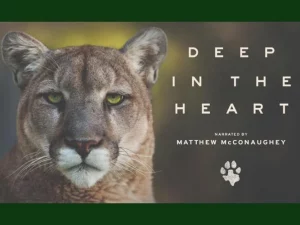
Longview native Matthew McConaughey narrates Deep in the Heart,a visually stunning film about Texas’ unique wildlife and natural features. The film is written and directed by Ben Masters of Fin and Fur Films.
The film celebrates what makes Texas unique — its diverse landscapes and remarkable wildlife that cannot be found anywhere else in the world. The story is told through the eyes of wildlife species ranging from the mysterious blind catfish to the elusive mountain lion. The story follows our changing relationship with the natural world and humans’ ability to destroy, conserve, and recover wildlife and the habitat we mutually depend on.






Sorry, the comment form is closed at this time.